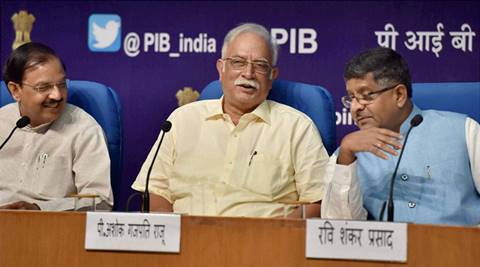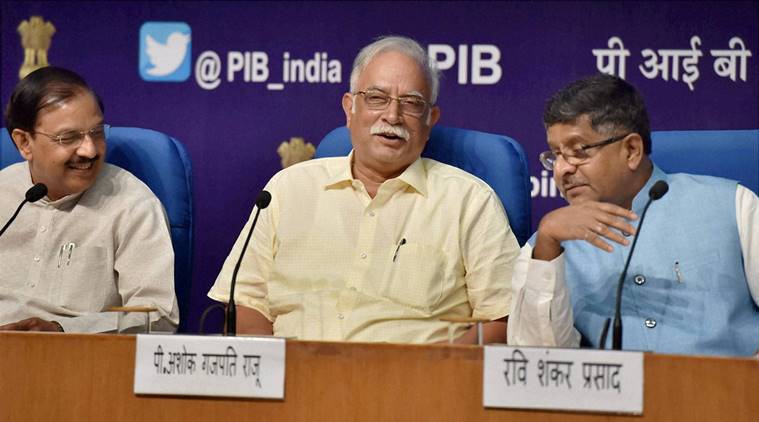Opinion About to take off
New civil aviation policy is well-intentioned, but gaps need to be plugged
 New Delhi: Union Civil Aviation Minister Ashok Gajpati Raju, MoS for Civil Aviation Mahesh Chandra Sharma look on as Union Minister IT and communications, Ravi Shanker Prasad during a press conference on national civil aviation policy which approved by cabinet in New Delhi on Wednesday. PTI Photo by Vijay Verma (PTI6_15_2016_000105B)
New Delhi: Union Civil Aviation Minister Ashok Gajpati Raju, MoS for Civil Aviation Mahesh Chandra Sharma look on as Union Minister IT and communications, Ravi Shanker Prasad during a press conference on national civil aviation policy which approved by cabinet in New Delhi on Wednesday. PTI Photo by Vijay Verma (PTI6_15_2016_000105B)  Union Civil Aviation Minister Ashok Gajpati Raju, MoS for Civil Aviation Mahesh Chandra Sharma look on as Union Minister IT and communications, Ravi Shanker Prasad during a press conference on national civil aviation policy which approved by cabinet. (Source: PTI)
Union Civil Aviation Minister Ashok Gajpati Raju, MoS for Civil Aviation Mahesh Chandra Sharma look on as Union Minister IT and communications, Ravi Shanker Prasad during a press conference on national civil aviation policy which approved by cabinet. (Source: PTI)
The NDA government has unveiled a new civil aviation policy that aims to address the ills of the sector. By all accounts, it has used broad strokes as well as done smaller tinkering to make the aviation policy more attractive
for new and existing airlines as well as alleviate some of the problems experienced by consumers. But pleasing everyone is not easy and the new policy reflects the difficulty.
For producers, the government has decided to junk the much-criticised “5/20” clause. It essentially required that a domestic airline must have operated for five years and must have at least 20 aircraft before it could offer overseas services. This patently policy-induced hurdle was seen to favour existing private players over new airlines which could have entered the market and provided greater choice to consumers. The new policy strikes down the five-year requirement. This is a decision in the right direction, but more importantly, one on which the government could build further — it needs to do away with the 20 aircraft requirement as well. Similarly, the policy’s attempt to improve services for domestic consumers by ramping up regional connectivity — Minister for Civil Aviation Ashok Gajapathi Raju called it the “centrepiece of the policy” — suffers from infirmities. It is creditable that the government has decided to invest in developing 50 no-frills airports in order to promote connectivity in “unserved areas”, mostly in Tier 2 and Tier 3 cities. Yet, the accompanying diktat of a price ceiling — Rs 2,500 for a one-hour flight ticket — harks back to the licence-permit raj. What makes it worse is that the government has offered to subsidise private airlines in case the ticket prices exceed this per-determined rate. This subsidy will reportedly be financed by yet another cess. Again, while investments in infrastructure that enable markets to flourish are welcome, arbitrary price curbs and bureaucratic interference in the affairs of private airlines will most likely lead to rent seeking.
The government should do all it can to ensure that the barriers to entry for entrepreneurs in the civil aviation sector are low. It should also focus on better and swift regulation to deal with anti-competitive practices by individual airlines. The government scores high on intent but the new policy has gaps that need to be plugged





